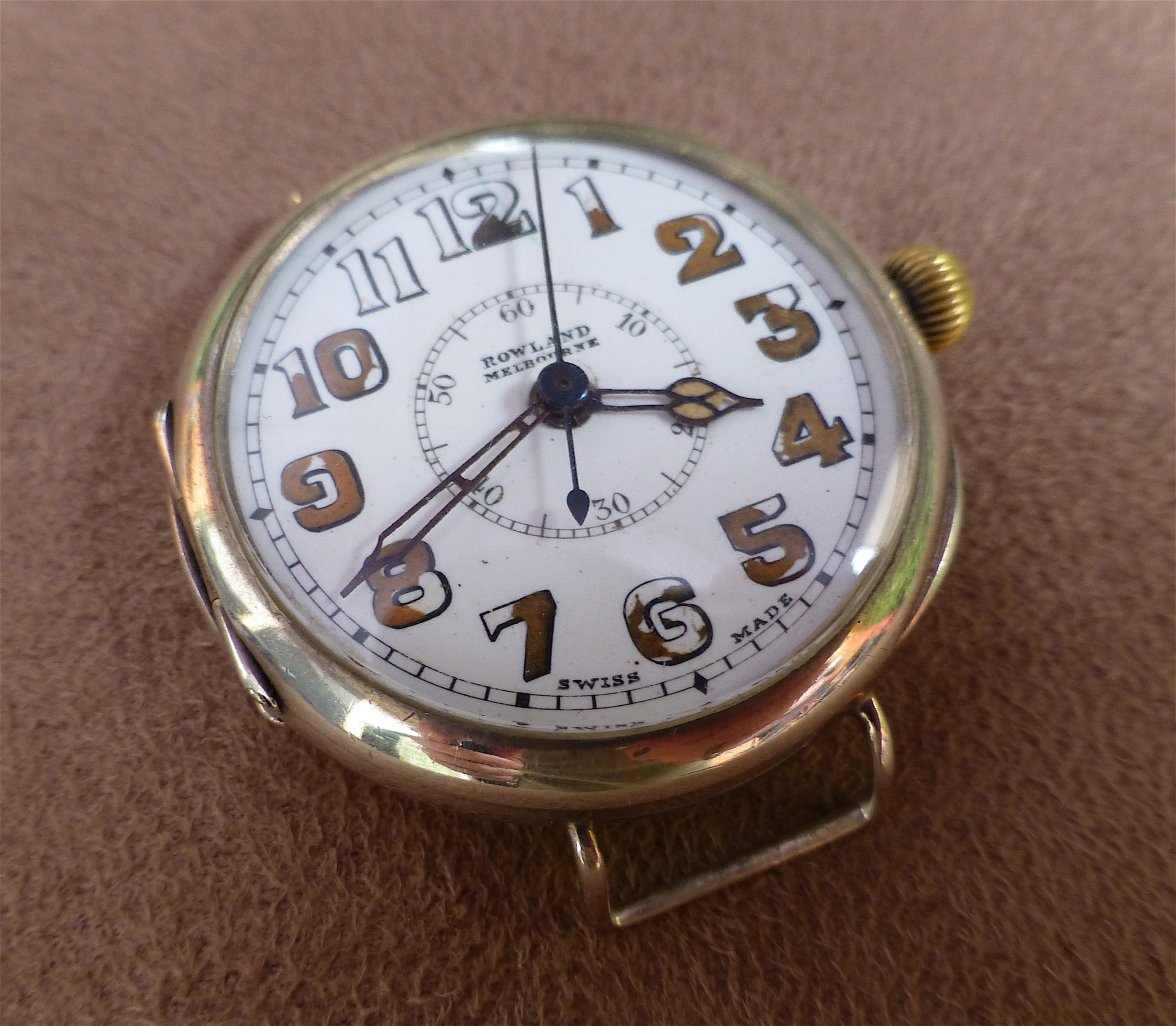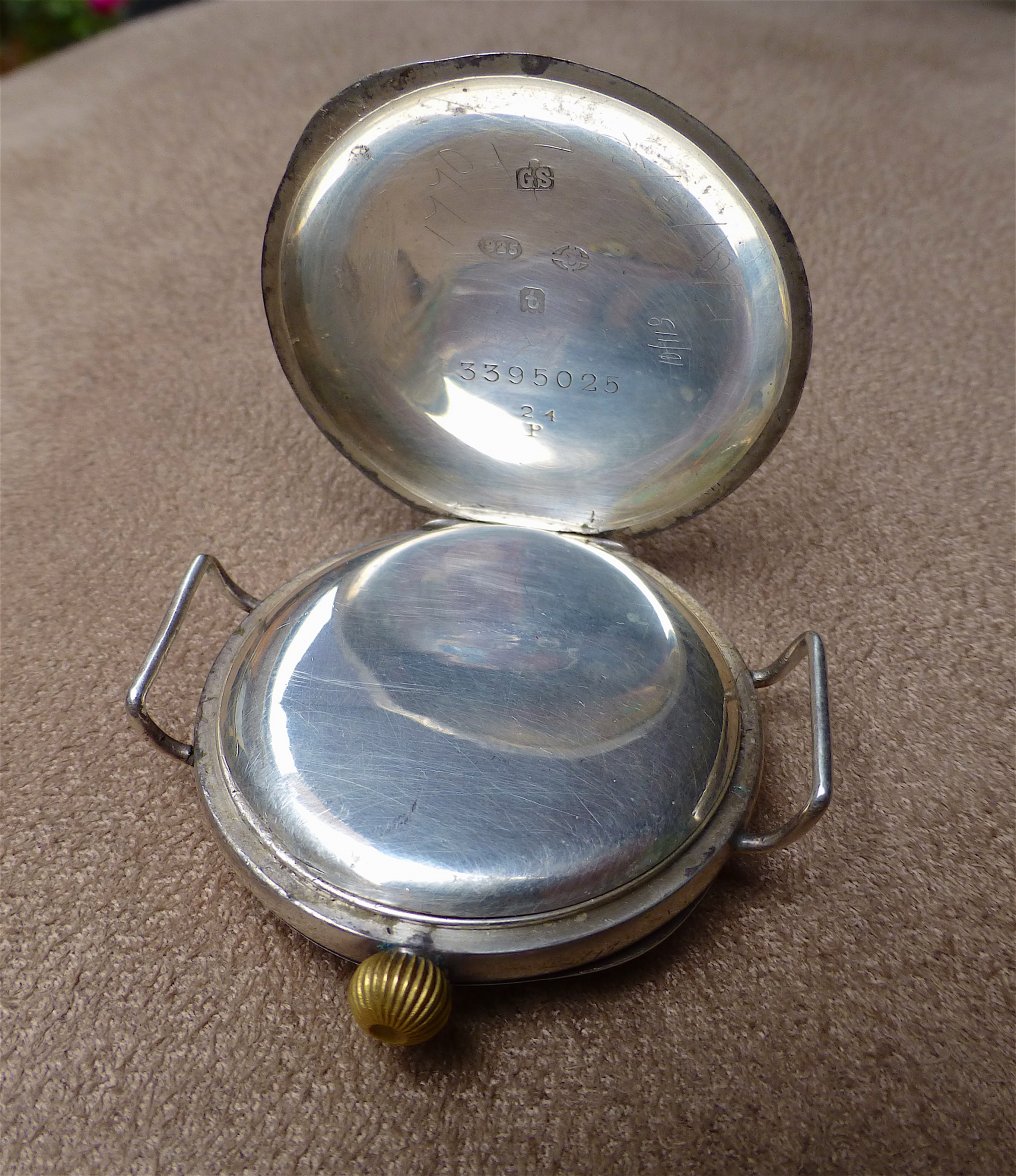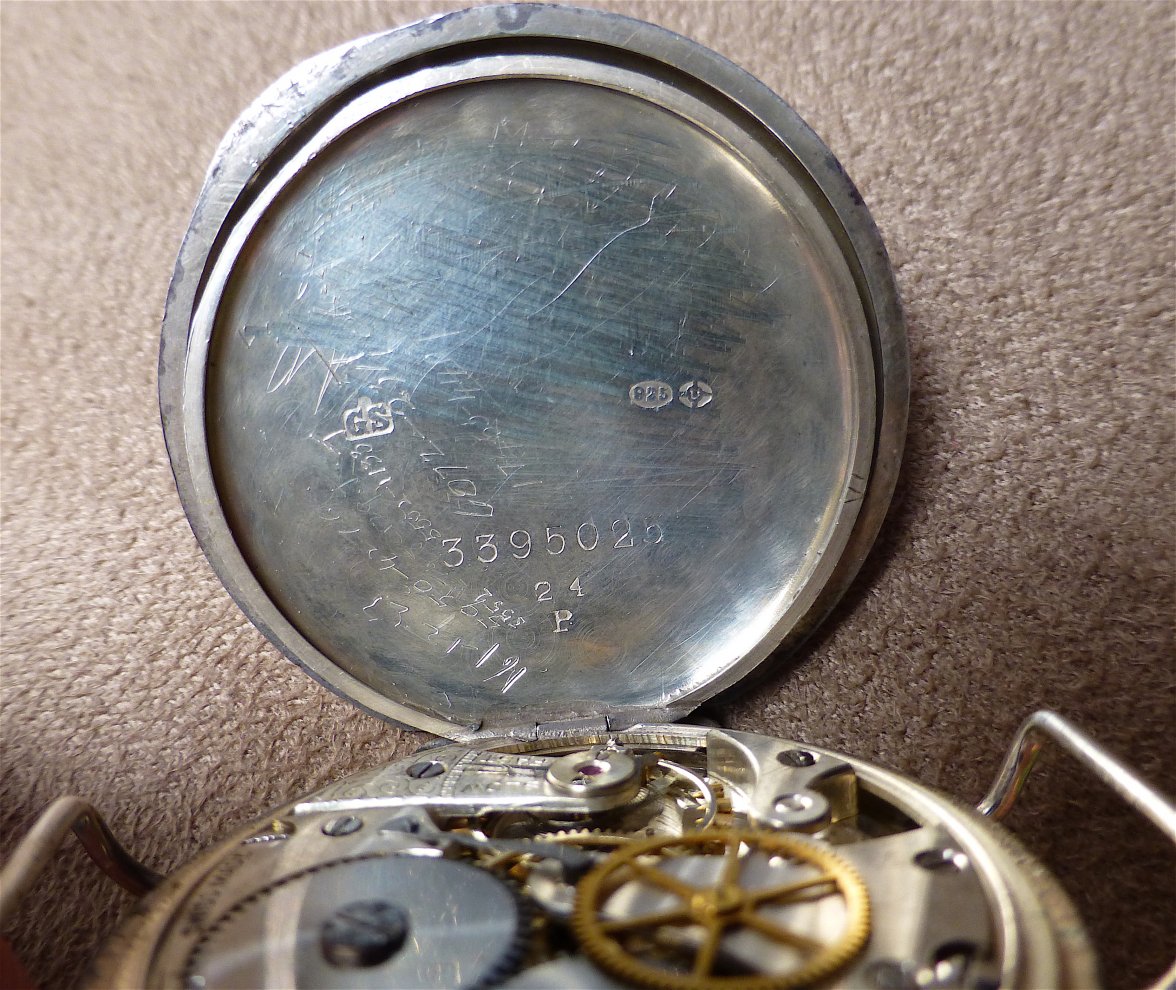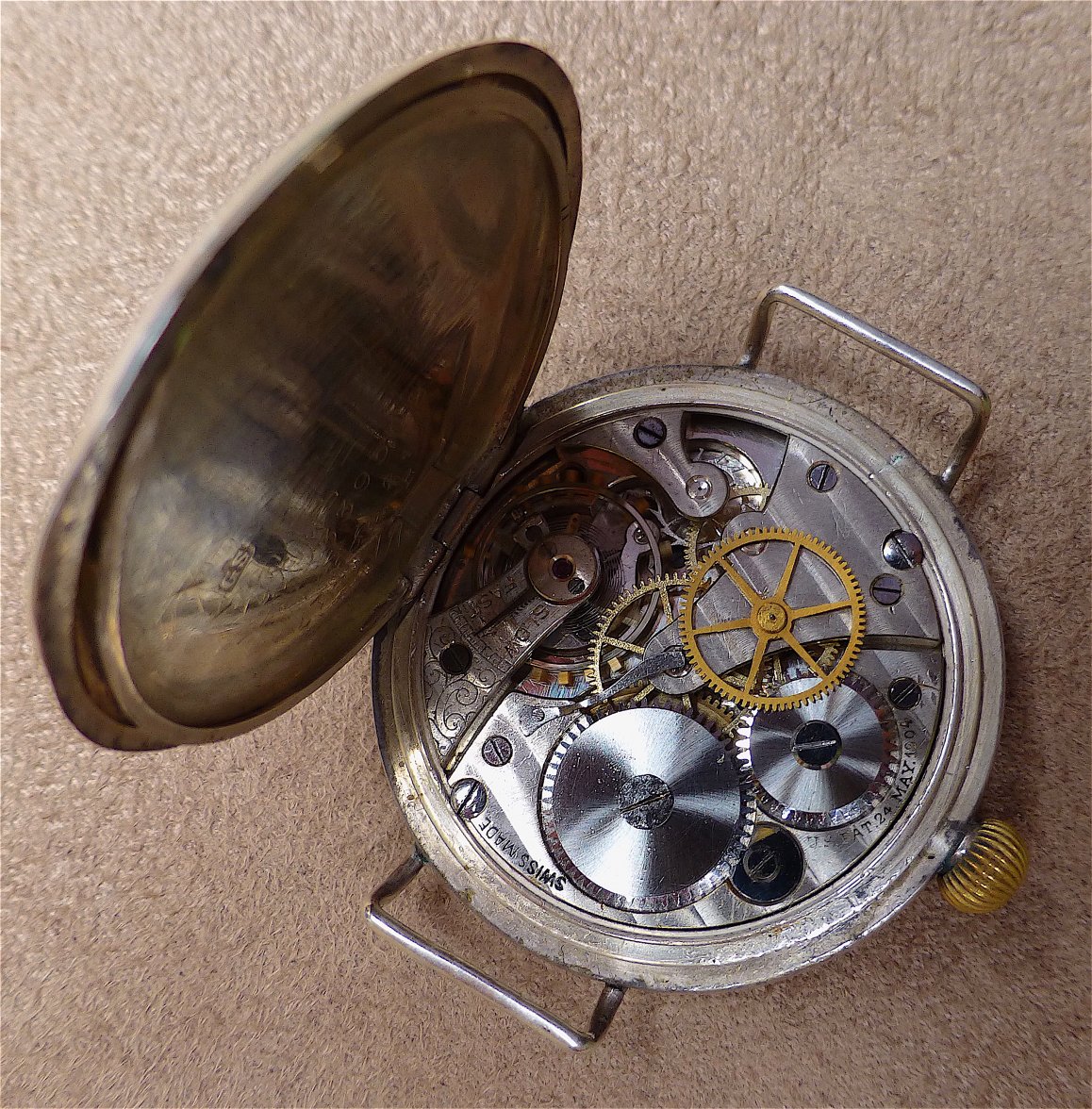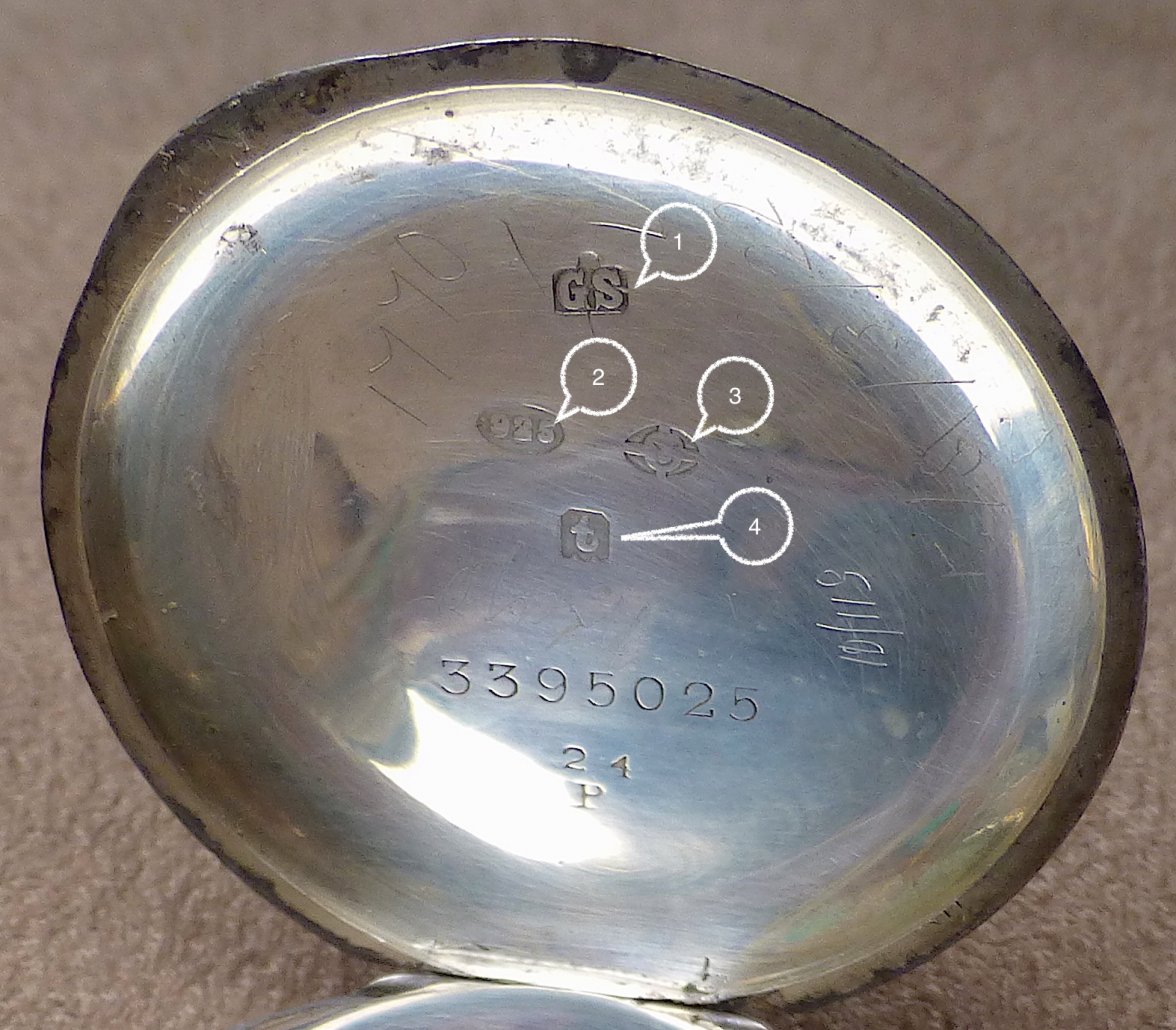JimInOz
··Melbourne AustraliaFor hundreds of years, men (and women) relied on pocket watches for keeping time, or just for the love of the intricacy.
During the period between the start of the last century until the mid 1920s, wrist watches were starting to evolve.
Some of the first wrist watches were simply converted pocket watches with lugs attached and worn with a strap. However, following the lead of makers like Omega and Rolex, a number of watchmakers created dedicated wrist watches.
Not quite pocket watch conversions, and not quite our modern integrated case/strap/bracelet combo, they were in my eyes, the transition between the two.
So, here is my latest capture. My Transitional.
The watch probably dates to around 1918 and was produced and sold by John Rowland, a Silversmith and Jeweller in Melbourne at the turn of the 19th century. The fully hallmarked silver case holds a Swiss movement with a centre seconds feature, something unusual at that time. It has had a busy life judging by the number of watchmakers marks made at servicing time. The enamel dial is in excellent condition with only a small crack at 12, however the lume (radium?) has worn off most of the numbers. The blued hands are in good condition, the minute hand having lost all lume though. The movement is a 12 ligne (at 27.6mm), the case is 34.5mm dia and 11mm high. Strap size is 12mm.
Anyway, enough rambling, on to the pictures.
During the period between the start of the last century until the mid 1920s, wrist watches were starting to evolve.
Some of the first wrist watches were simply converted pocket watches with lugs attached and worn with a strap. However, following the lead of makers like Omega and Rolex, a number of watchmakers created dedicated wrist watches.
Not quite pocket watch conversions, and not quite our modern integrated case/strap/bracelet combo, they were in my eyes, the transition between the two.
So, here is my latest capture. My Transitional.
The watch probably dates to around 1918 and was produced and sold by John Rowland, a Silversmith and Jeweller in Melbourne at the turn of the 19th century. The fully hallmarked silver case holds a Swiss movement with a centre seconds feature, something unusual at that time. It has had a busy life judging by the number of watchmakers marks made at servicing time. The enamel dial is in excellent condition with only a small crack at 12, however the lume (radium?) has worn off most of the numbers. The blued hands are in good condition, the minute hand having lost all lume though. The movement is a 12 ligne (at 27.6mm), the case is 34.5mm dia and 11mm high. Strap size is 12mm.
Anyway, enough rambling, on to the pictures.
